Modern “Linen Press” Cabinet
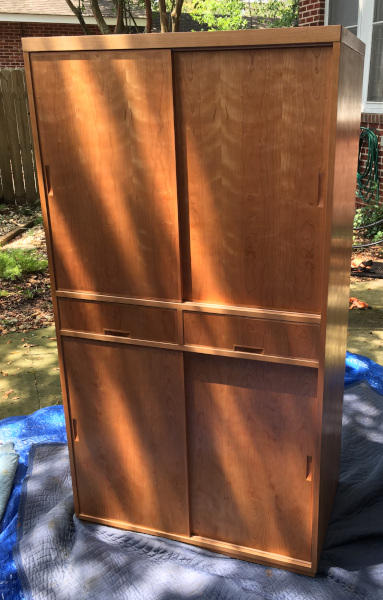
Dimension: 64″ H x 36″ W x 22″ D • Primary Wood: cherry • Finish: garnet shellac (padded)
“Traditionally, a linen-press is a cabinet, usually of woods such as oak, walnut, or mahogany, and designed for storing sheets, table-napkins, clothing, and other textiles.” — WIkipedia
This piece goes in to our bedroom to hold miscellaneous items other than clothing. To decide its design, I studied the linen presses for their forms and dimensions. (Whether it’ll actually house linens is remain to be seen.) As such, I’m loosely calling this cabinet a linen press with a modern flare.
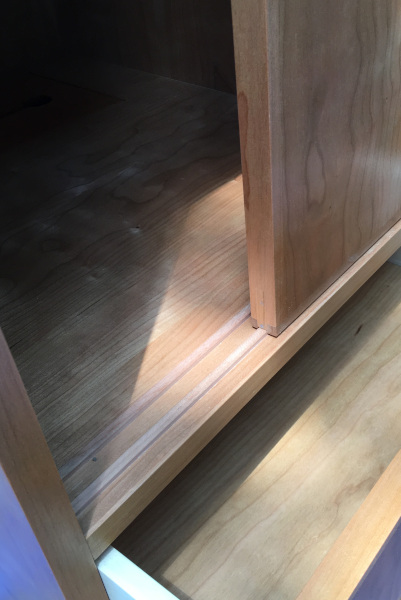
There are several features that I wanted to explorer with this build. First are the sliding doors. They are common in Japan where I grew up, much more so than here in the U.S. (probably due to tighter housings over there). So this was something I wanted to try out for some time. There are basically 2 ways to construct the sliding doors: a grooved door to slide on a protruding rail or a door to slide in a shallow dado. Here, I used the protruding tracks on the carcass. To make the doors removable, the height of doors are shorter than the opening by the height of the track.
Another feature that goes along with the sliding doors are the recessed door handles. “Bi-slide” doors cannot have protruding handles. Such handle on a rear door would block the motion of the front door. I milled a simple recessed handle from a solid cherry block by plunge cutting it with a dado stack. The plunge cut was made with a larger stock then milled to the final dimension, leaving 1/16″ reveals around the recess.
I’ve done the same for the drawers to maintain the design uniformity. The plunge depth was increased, and finger recess is added under the top reveal.
The final feature is the LED lighting. Doored cavities are lit by LED strips. The light light only comes on when the doors are open, controlled by magnetic (or reed) switches embedded in wood. All the wires (which are extracted from old computer network cables) are also laid in grooves with solid cherry covers.
Tidbits:
- These “hardwood” plywood sheets are the first one I ever encountered/noticed that they have softwood (pine?) inner plies. The face veneers are very nice and beefy, though.
- Grain selection is as important (if not more) for plywood than solid wood. Show panels should be cut first with best looks. Avoid having the cathedral patterns to appear along the edges. I was mostly successful at that with minor flaws that not many will notice.
- Ideally, I would use one sheet for doors and drawer fronts,
- If you use cauls on the underside during glue up, make sure that they are all the same height or use spacer blocks. Mine weren’t, and the carcass as a result is slightly bowed. I had to spend extra time making the doors non-square to fit, and I dare would not butt this cabinet up against another furniture…
- Magnetic switches are polarity sensitive. Test before cover it up.
- Garnet shellac actually yellows cherry. It will be interesting what color the cabinet will settle after many years of use.
- If you pad shellac, prefinish as much as you can before glue-up, especially for darker kinds. I did so for the inside faces but forgot that the design calls for the top to protrude just a hair from the sides. I could not master to lay down even coats right along that joining edge (after 4 tries) and it shows.
- I will probably add more shelving and linen drawers as we have a better idea of what all exactly goes into this cabinet.
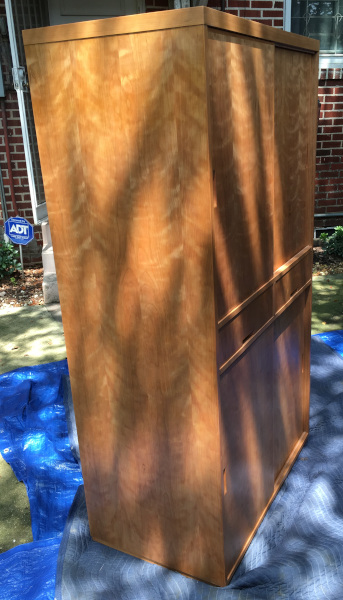
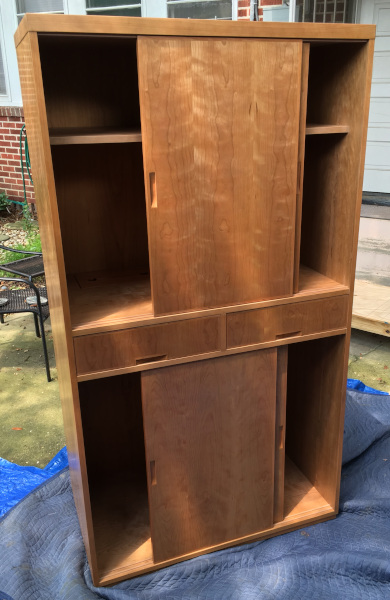

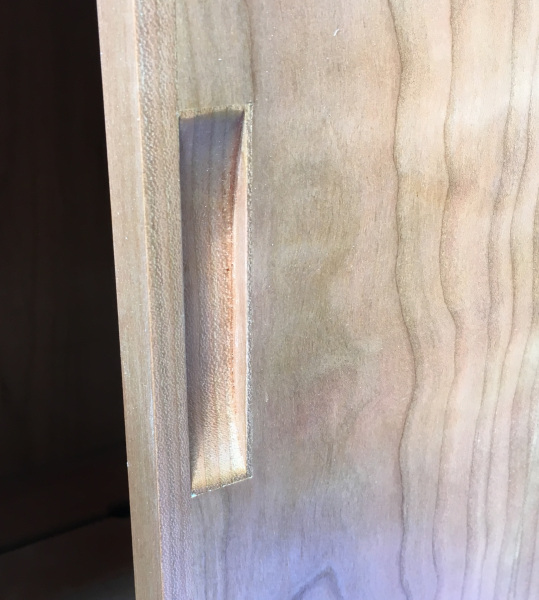
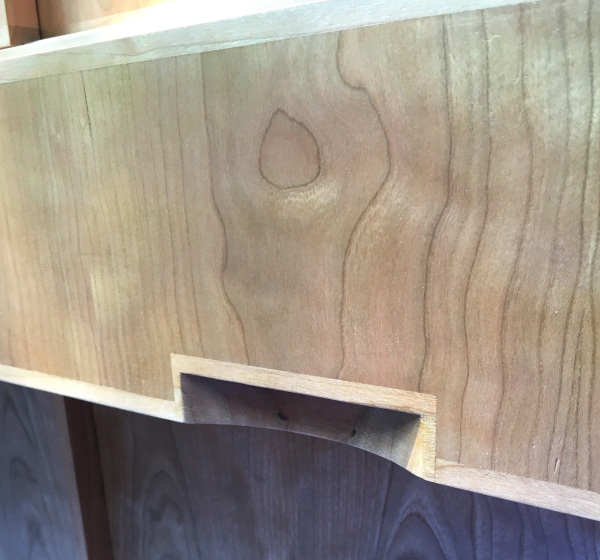
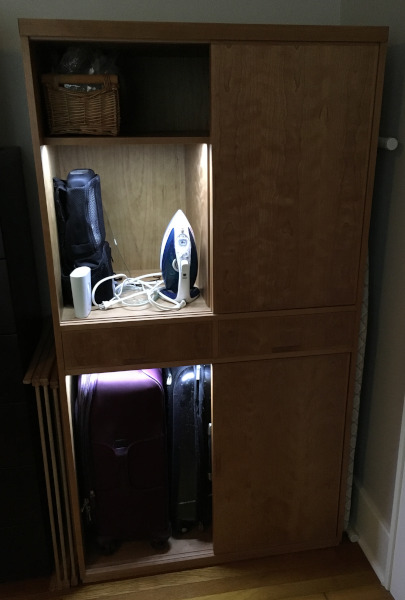
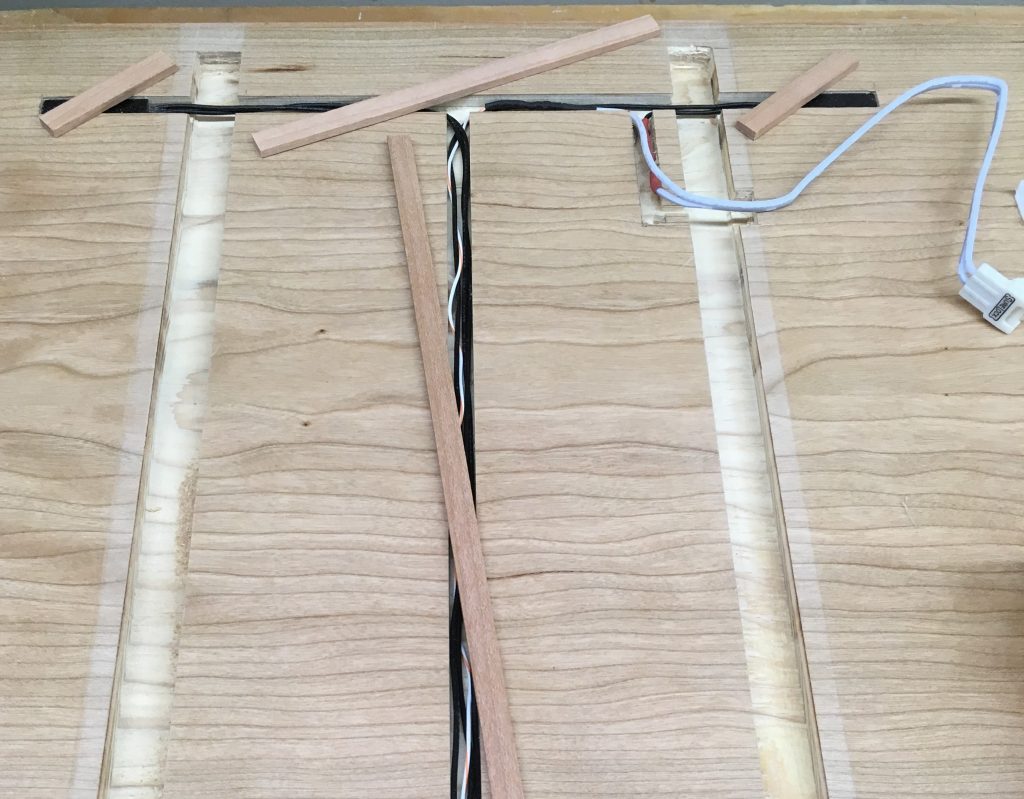
Beautiful. You do very nice work. I love your honest and candor. Not very many people would share the shortcomings of a project as well as the outstanding ones.
Kesh, outstanding job! Thanks for writing such a detailed article on how you made it. Really like the Tidbit section.